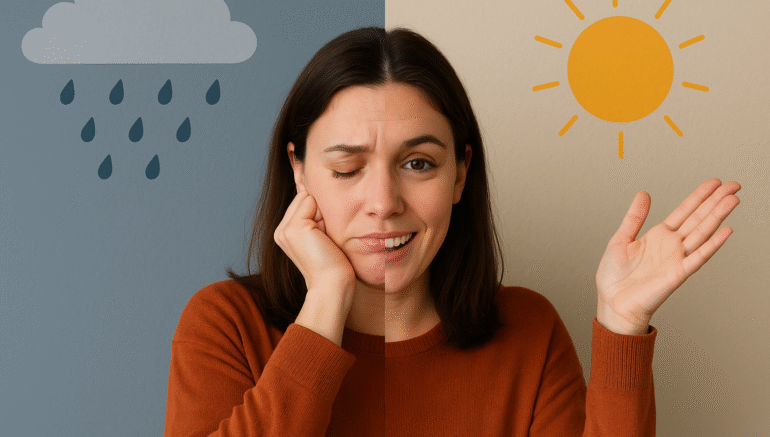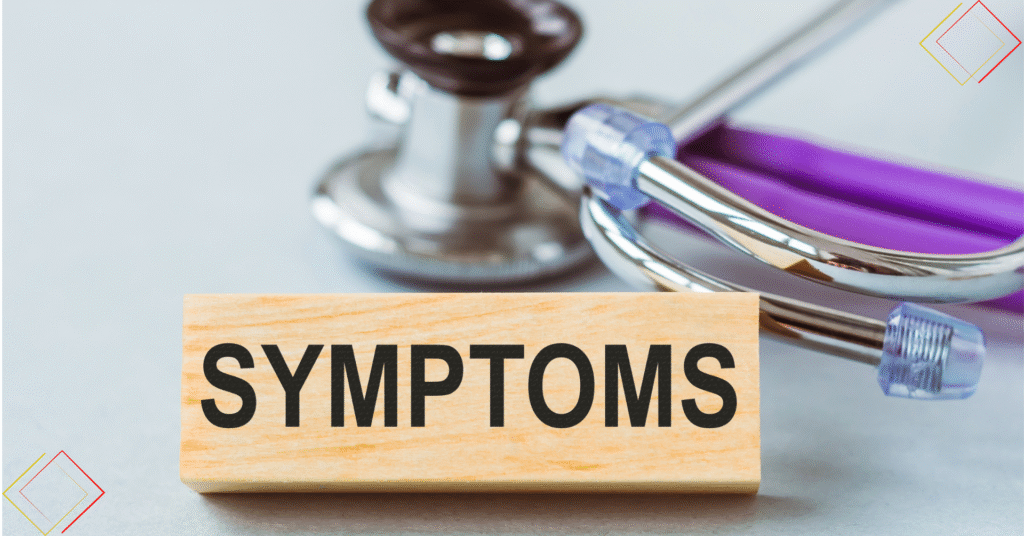
February 9, 2023
A person wakes up one day full of insuppressible energy, confidence, excitement, and finds out that in weeks, one cannot move out of bed, full of sadness and hopelessness. It is not a fantasy to a million Americans, but their day-in, day-out, with bipolar disorder.
The National Institute of Mental Health (NIMH) states that bipolar disorder occurs in 2.8% of adults in the U.S. annually, with the average age of disorder onset being 25. Although it is very common, it has been confused with mere mood swings. The fact of the matter is that bipolar disorder is a severe mental illness that changes how individuals think, feel, and act, affecting relationships, work, and the quality of life in general.
In this blog, we discuss the signs, symptoms, psychological factors, and treatment of bipolar disorder, as well as how Americans are living and coping with this complicated disorder.
Spotting the Signs: How Bipolar Disorder Shows Up
Bipolar disorder is also characterized by extreme emotional conditions and can be divided into three key categories, namely: mania, hypomania, and depression.
The Highs of Mania
Being on top of the world, or irritable.
- Flashes of vitality without much or no sleep.
- Rushing thoughts and pressured talk.
- Risky behavior (e.g., excessive spending, unsafe driving)
- Impairment of attention to everyday functions.
The Middle Ground of Hypomania.
Hypomania is less severe than mania. Although this might appear fruitful-enhancing concentration and vitality, it tends to get out of control without any treatment.
The Lows of Depression
- Extreme melancholy, despair, or emptiness.
- Loss of appetite in activities previously enjoyed.
- Difficulty with attention or decision-making.
- Guilt or worthlessness.
- Fatigue and sleep changes
- Severe thoughts of death or self-harm.

The Psychology of Bipolar Disorder.
Bipolar disorder not only changes the moods, but the way of thinking, decision making, and relationships are reformed.
Distorted Thinking
In depression, the thoughts are inclined on the lines of I am worthless or things will not get better. It switches when in mania, the converse happens: I can do anything, or I do not need to sleep.
Emotional Dysregulation
The brain can not regulate extreme highs and lows, and people feel out of control.
Aggressive Relationships
A worsened mood can confuse or insult the loved ones and therefore act as a barrier between them.
Issues in Decision-Making
Mania promotes impulsiveness, and depression paralyses decision-making, which creates chaos in professional and personal life.
Psychologists have a way of calling this an emotional roller-coaster, and the highs and the lows are driven by cognitive distortions.
Types of Bipolar Disorder
The different types can be learnt to appreciate differences in symptoms:
- Bipolar I Disorder: This disorder is characterized by at least one manic episode that fulfills the entire seven-day period, or in the hospital with many depressive episodes.
- Bipolar II Disorder: It is the one that includes the so-called hypomanic episodes and major depressive episodes, but not total mania.
- Cyclothymic Disorder: Mood swings of lesser severity that persist above two years or more.
- Other Specified/Unspecified Bipolar Disorders: The symptoms that do not fall in categories but still create havoc in life.
Therapy: Eating a Little Less and Living a Little More.
The good news about bipolar disorder is that it can be easily treated. The treatment normally entails medication, therapies, and lifestyle modification.
Medications
- Mood Stabilizers (e.g., Lithium, Valproate) are used to prevent the highs and lows.
- Antipsychotics can be used to treat severe manic episodes.
- In some cases, antidepressants would be used cautiously alongside mood stabilizers to avoid the occurrence of mania.
Psychotherapy
- Cognitive Behavioral Therapy (CBT): Helps in challenging the distorted thinking as well as regulating behavior.
- Family-Focused Therapy (FFT): It trains the family to recognize the predispositions and helps them to provide it.
- Interpersonal and Social Rhythm Therapy (IPSRT): Determines the daily routine and the sleep habits that are healthy so as to stabilize the mood.
Lifestyle Strategies
- Exercise: Endorphins increase and regulate mood.
- Diet: Omega-3 fatty acids and a balanced diet aid the health of the brain.
- Sleep Hygiene: Under the influence of regular sleep, mood stabilization is avoided.
- Mindfulness & Meditation: Be emotionally aware and decrease stress.
- Alcohol/Drugs: Avoidance: Lowers the chances of episode triggering.
Bipolar Disorder in the U.S.
Being a bipolar disorder patient is not an easy task, and millions of Americans can cope with it under proper support.
- Support Groups: Community and online support are offered by such organizations as NAMI (National Alliance on Mental Illness).
- Workplace Protection: The workers with bipolar disorder have a right to accommodations under the Americans with Disabilities Act (ADA).
- Education & Awareness: Education Schools and universities are becoming more accommodating to students with mental health issues.
- Reducing Stigma: Mental health campaigns throughout the U.S. are breaking the silence in such a way that people can now seek help and can do so without shame.
Through treatment and perseverance, bipolar disorder can result in a successful, creative, and satisfying life for many individuals.
Finding: Hope Beyond the Highs and Lows.
Bipolar disorder is not just a changing mood but a condition of the psyche of millions of Americans. The unending process of mania, depression, and in-between conditions can affect all aspects of life, including relations and even work.
However, through an appropriate combination of treatment, medications, changing lifestyles, and support structures, people can be brought back to their feet and lead a quality life.
The path can be difficult, though it is not doomed. It is not impossible to live with bipolar disorder, and with knowledge, compassion, and therapy, Americans can live balanced between the ups and downs.






